- Home
- Geraldine Brooks
Foreign Correspondence
Foreign Correspondence Read online
FIRST ANCHOR BOOKS TRADE PAPERBACK EDITION, JANUARY 1999
Copyright © 1998 by Geraldine Brooks
All rights reserved under International and Pan-American Copyright Conventions. Published in the United States by Anchor Books, a division of Random House, Inc., New York, and simultaneously in Canada by Random House of Canada Limited, Toronto. Originally published in hardcover in the United States by Anchor Books in January 1998.
Anchor Books and colophon are registered trademarks of Random House, Inc.
The Library of Congress has cataloged the Anchor hardcover edition of this book as follows:
Brooks, Geraldine.
Foreign correspondence: a pen pal’s journey from Down Under to all over / by Geraldine Brooks. — 1st Anchor Books ed.
p. cm.
1. Brooks, Geraldine. 2. Foreign correspondents—Australia—Biography. I. Title.
PN5516.B76A3 1998
070.4′332′092—dc21
[B] 97-15413
eISBN: 978-0-307-77364-7
www.anchorbooks.com
v3.1
To the memory of Lawrie, and to Gloria
… nothing is more sweet in the end than country and parents ever, even when far away one lives in a fertile place …
—The Odyssey
CONTENTS
Cover
Title Page
Copyright
Dedication
Acknowledgments
Part One
1 Post Marked
2 Return Address
3 Little Nell
4 Beam Me Up, Joannie
5 Shalom, Mate
6 French Letters
7 Which Side Are You On?
8 Same Place, Different Skies
Part Two
9 She Was Going to Be You
10 Arab, Jew and Aussie
11 Cherchez la Femme
12 Breakfast with the Queen of the Night
13 Yours, Faithfully
Reader’s Companion
ACKNOWLEDGMENTS
I would like to thank Martha Levin and Elise O’Shaughnessy for convincing me to write this book; Darleen and Michael Bungey, Miki Bratt, Sarah and David Chalfant, Charlie Conrad, Elinor Horwitz, Brian Hall, Gail Morgan and Tina Pohlman for their comments on its early drafts; Joshua Horwitz, all-purpose sage; and Sara Mauck, without whose help it wouldn’t have been finished.
Above all, I would like to thank the two men in my life: Tony, who put the idea in my head and then helped to get it on the page, and Nathaniel, whose full-throated comments and occasional efforts at the keyboard made it easier to reenter the world of my own childhood.
1
Post Marked
It is a hot spring day and I am in the basement of my parents’ house in Sydney, sorting through tea chests. Pine floorboards creak above my head as my mother steps beside my father’s bed, checking his breathing mask. The old floor is thin and while I can’t make out her words I recognize the tone, its veneer of cheerfulness layered on anxiety.
From my father, propped up on pillows, I hear nothing. He barely speaks anymore. His voice—the beautiful voice that once made his living—is silenced by the simple effort of breathing. He is staring toward a picture window that frames a view of ocean through a fluttering fringe of gum leaves. But he can’t see it. His eyes, almost sightless now, are the whitened blue of faded cornflowers.
When my father moved to this beach house just after his retirement, he should have had the leisure to sort his old sheet music, to work on his half-composed tunes, read his cricket books, enjoy his correspondence. Instead, he became ill that year and never found the energy even to unpack. So I have come down here to do it, because I don’t think I will have the heart to face these things once he is dead.
The dirt floor of the unfinished basement is cool against my bare legs, and I take my time. Twelve years of dust has filtered through the flimsy lids. Spiders scurry away, indignant, as I disturb them.
My father squirreled away everything. There are yellowed news clippings about his career as a big-band singer in Hollywood and Hawaii in the 1930s, before he came to Australia. There are dozens of dog-eared photographs of musicians with frangipani leis lying incongruously against their tuxedos; even more of Australian army mates in slouch hats at the Pyramids, in Jerusalem’s Old City, among the huge-leaved trees of New Guinea.
And there are letters, piles of them. Replies to every piece of correspondence my father ever wrote. He wrote, I realize as I unfold the brittle pages of fifty-year-old letters, to everyone. From 1931, there is a two-line note from Albert Einstein, in verse, responding to a request for permission to perform a ditty about him that my father had composed. Einstein writes: “Though somewhat silly, I don’t mind—there’s no objection I can find!” There is White House stationery—a 1969 reply from the chairman of the Council of Economic Advisers thanking my father for his “good letter” on interest rates. There is a 1974 response from the office of Rupert Murdoch answering my father’s complaint about the creasing in his broadsheet newspapers. And a letter from an acoustical expert thanking my father for his suggestions about raising the height of a concert-hall floor to improve the way sound carries.
Each letter is a small piece of the mosaic of my father’s restless mind, its strange mingling of global interests and nitpicking obsessions. Some of the replies raise questions: Why did he write to the Israeli Minister of Defense in 1976? Where is the poem he wrote about Winston Churchill that the Australian Prime Minister thanks him for in a 1958 letter? My father is beyond answering such questions now. I have left it too late to ask.
Near the bottom of a tea chest is a thick pile of airmail letters that raises an altogether different set of questions. Held by a withered rubber band, they are addressed, in various childish handwritings, to me. As I pull them out and blow the dust off, I recognize them as letters from my pen pals—from the Middle East, Europe, the United States.
I stare at them, puzzled. It was my mother who saved our school report cards, our drawings and poems, old toys and memorabilia. While I have never doubted that my father loved my sister and me, he rarely involved himself in the day-to-day business of our lives. Yet here, among his things, is more than a decade of my correspondence, from 1966, when I discovered pen pals, to 1979, when my parents moved to this house.
When I wrote to these pen pals, in the late 1960s and 1970s, my family inhabited a very small world. We had no car, had never set foot on an airplane and, despite my father’s American relatives, never thought of making an international telephone call.
In the evenings, families in our neighborhood would gather on the front verandas of their houses and wait for the “southerly buster”—the big thunderstorm that would break the heat, lay the dust and leave the air cool enough to allow sleep.
I was waiting, too. Waiting for something to happen, and wishing that I lived in a place where something did. Except for relentless coverage of the British royal family, Australian newspapers paid little attention to foreign places. The nightly TV news was more likely to lead with the coliform bacteria count at Bondi Beach than the body count in Vietnam. Yet, at school, our history books were filled with tales of elsewhere. The Great Men—and they were all men, in those days—were British, American, German, French. I was aware from religion class that a few women had made it to greatness via sainthood, but they came from even more distant-sounding places—St. Theresa of Avila, Bernadette of Lourdes. A St. Margaret of Melbourne or a Diane of Dubbo was clearly out of the question.
My father’s escape was the yellow-painted metal mailbox on a post by the privet hedge. Almost every day it contained a letter for him from somewhere else—flimsy aerograms or heavy bond paper with official-loo
king seals. At the age of ten I learned that it was possible for me, too, to write to strangers and have them write back to me. Suddenly, I could see a way to widen my world by writing away to all the places where I imagined history happened and culture came from. When the letters came back from Vaucluse in France or Maplewood in New Jersey, I studied the foreign images on the stamps and dreamed myself into the lives of the writers.
And now I have their letters again in my hands. I sit in the basement, reading, as the light slowly fades and the surf thuds on the nearby beach. Oldest of all, nibbled around the edges by silverfish, are the letters from my very first pen pal, a twelve-year-old girl nicknamed Nell who lived just across town, and in a different world.
Better preserved are the more recent letters from my American correspondent Joannie, to whom I wrote for more than fifteen years. She became my distant, teenage soulmate and taught me how evanescent, and how enduring, such a friendship can be. Her letters give me glimpses of my girlish self. “Do you know what the control mice died of?” she asks, reminding me of my grandiose and doomed attempt, at the age of fourteen, to alleviate world hunger by proving the edibility of garden weeds. I’d forgotten that I once knew how to write the words “Live Long and Prosper” in the original Vulcan. And did I once call myself by the hideous nickname “Gez”?
The geography of this childhood correspondence has become the road map of the adult life I have lived. Joannie’s letters became a magnet drawing me toward the United States. In 1982, I wrote to tell her I had won a graduate scholarship to the Columbia School of Journalism in New York.
The address of my pen pal in a little village in southern France is only a hundred miles from the other little French village, on the stony, sunlit hillside, where I married in 1984.
In my teens, I wrote to an Arab and a Jew in the Middle East. Twenty-five years later, I arrived in Cairo on a hot autumn night to spend six years covering the Middle East as a reporter. From foreign correspondent to Foreign Correspondent: I have become the envelope full of words flying around the world.
But I know so little about these people who shaped my vision of the world. How has the reality of their lives matched the fantasies I projected on them from the safe harbor of my Sydney girlhood? I begin to wonder if it’s possible to track down forty-year-old adults using only the childish letters they wrote half a lifetime ago. Gently gathering the fragile correspondence with its faded addresses, I decide that one day soon I will try to find out.
2
Return Address
Now, when I do not live there any more, Sydney floats in my imagination like Atlantis. The sunlit harbor is everywhere, its glittering fingers poking into clusters of coral-red roofs.
In the argot of geologists, Sydney is a drowned river valley. The ocean has poured over the ancient pathways of inland waters, flooding the bottomlands and leaving only the high ground exposed. Instead of a gentling from hill to valley to shore, earth and water collide abruptly. Sheer sandstone cliffs confront the glassy breakers of the Pacific, and high knolls plunge straight into deep inlets.
From the air, the land looks like two gnarled hands reaching for each other across a watery abyss. On one finger, the skyscrapers of the central business district rise suddenly like an ostentatious ring. That knot of glitter loosens into a mesh of tiny cottages and terrace houses, then to the sprawl of red-roofed bungalows punctuated by the aqua oblongs of backyard swimming pools. In those backyards, rainbow lorikeets dangle, bright as Christmas lights, from the branches of red gum trees. Winter wattle blooms golden against a crisp blue sky.
This primary-colored paradise is a trick of homesick memory. This Sydney exists, to be sure. But it is not the city in which I grew up. I was born on Bland Street, Ashfield, and the background color of my childhood is the ashy gray of the high, weathered fences that marked out each quarter-acre lot. Summers bleached the backyard grass colorless and dried it until it crunched underfoot. Beyond the fence, our treeless street melted in the sun, the black asphalt bubbling.
We lived in one of the lower-middle-class neighborhoods that ooze westward from the coast across a baking plain to the city’s perimeter at the foot of the Blue Mountains. We were part of a sprawl that extended over six hundred uninterrupted square miles and housed a quarter of Australia’s population.
From the rim of that flat plain, I had no sense of my city’s dramatic topography. The harbor that now so dominates my image of the city does not figure in any of my early memories. Perhaps it is because young children are unmoved by scenery of all sorts, their focal point always on the faces of the people around them. Dimly, I knew that the harbor existed, because it was where they were building the fanciful, toylike Opera House. My mother and her friends sometimes shared a ticket in the Opera House lottery. If they won, I supposed, we would get title to the building, and all go to live under the soaring white sails. Perhaps I would be allowed to use the smooth, plunging roofs as slippery-slides.
We did not go to the city or the beach. Because we had no car, even short journeys loomed in family discussions like epic treks. Besides, my parents were too busy on weekends fixing gutters and fighting rising damp in our Victorian terrace house.
From the outside, the Bland Street terrace was a picturesque pair of houses linked by a common center wall. A cake-decoration trim of cast-iron balconies squiggled its lacy way across the facade. But the charm was all exterior. Inside, the rooms were dank in winter, stifling in summer, the few windows taking no account of the Mediterranean-style climate of the new city in which it had been set down. Its design wasn’t meant for Sydney. Like a good part of the city’s population of that time, the terrace style had been lifted straight from cold, crowded cities such as London or Dublin.
While my mother battled broken sash cords and crumbling plaster, my father hacked away at the tangles of morning glory in the overgrown garden or slapped sealer on the rusty iron roof. Weekends were the only times I really saw him. Weekdays, he left early for his job as a proofreader on a daily newspaper. Early in the morning while I was still drowsy, he was a fleeting scent of Californian Poppy hair oil and a sweet, sharp taste of sugary black coffee in a hurried goodbye kiss. Most nights, he was out until way past my bedtime, singing at nightclubs, in recording-studio sessions, or on the radio.
But on weekends he would be home: up the dizzying extension ladder, shirtless, tanned, glistening with sweat. His unlined face and firm torso looked like a young man’s. He never walked anywhere; he bounced like a boy. He liked to sprint across busy streets, dodging cars with the graceful swoops of a matador. Yet by the time I was two, he was already fifty.
My mother, in her mid-thirties, was the adult in our lives. Weekdays, I was her shadow, roaming the rooms of the big house while my sister Darleen, an unfathomable eight years older, was away all day at school. I would climb upstairs to the iron-lace balcony, peering through its arabesques at the street below.
It was through that filigree that the outside world gradually came into focus. Every afternoon, in the garden of the monastery adjacent to the Catholic school across the road, a blacksoutaned figure paced back and forth, reading his Office from a small prayer book. The sight of this slender cleric soothed me: I thought he was God. I was glad we had him so handy.
We lived on Bland Street during the bland years of Australia’s history. Like the 1950s in the United States, the postwar years in Australia were a timid, conservative time. My parents’ generation had been wracked by the Depression and the war. Happy to be alive and employed, most of them were too exhausted to contemplate change. The right-wing government that came to power in 1949 stayed in office for more than twenty years. Its leader was Robert Menzies, an Anglophile who felt more at home at a palace ceremony in London than he did in his own country. Returning from England in 1941, he wrote in his journal that “a sick feeling of repugnance grows in me as I near Australia.”
His pro-British, pro-monarchy rhetoric infected us all with the sense that we were second-raters—infer
ior convict stock who should continue to look to the culture and history of our colonizer rather than try to forge an identity of our own. So, instead of admiring the spiky beauty of native grevillias and the hazy, bottlebrush-shaped blooms of callistimon, we planted our gardens with English primroses and watched them wilt in the heat. We decorated our walls with portraits of Queen Elizabeth and prints of landscapes by Constable and Turner. At Christmas, when overripe papayas fell from our backyard tree with a wet splat, we sweated our way through a dinner designed for a European winter solstice, with dried fruit on the table and pudding flamed in brandy for dessert.
We had no idea how to use our benign climate to grow a wider variety of produce than our English and Irish forebears had known. At the greengrocer, lettuce meant iceberg. A seafood dinner meant fried fish and chips—never the cheap, plentiful produce of the harbor, the calamari or delicious, nutty-fleshed crustaceans called Balmain bugs. Richer families sent their children to be educated at private institutions with names like “The King’s School” and “Scotch College” where elocution teachers vainly tried to round out the flattened vowels of a Cockney and Celtic heritage. The country’s premiere institution of higher learning, the University of Sydney, stated its mission of aping Oxford and Cambridge in its motto, Sedare Mens Edam Mutato (Same Place Different Skies). It didn’t even have a chair of Australian literature until the 1960s. At sports events and official functions, we stood for the playing of our national anthem: “God Save the Queen.”
In a city where even the governor’s residence had been built facing the wrong way—its big windows orient south, waiting in vain to catch the light of a sun that in our hemisphere moves through the northern sky—it was no wonder that our Bland Street terrace house was a misplaced piece of Victorian England. For the five years after I was born, my parents worked on the house until they finally had it in shape to sell. With the profit, we moved a few miles farther west to a neighborhood named Concord, into a smaller, newer, cookie-cutter cottage designed at the time Australia’s states achieved federation in 1901. A cool, tiled porch shaded the front door, which opened on a central hallway. Inside, the hall divided four rooms two by two and then emptied into a dining room and kitchen running lengthways across the back. An enclosed veranda had been added beyond.

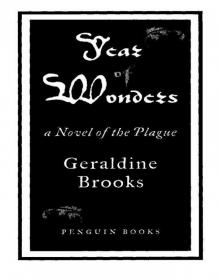 Year of Wonders
Year of Wonders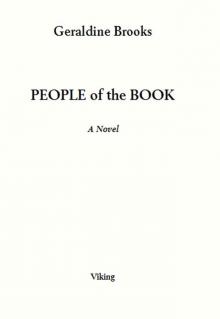 People of the Book
People of the Book The Secret Chord
The Secret Chord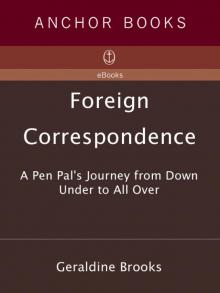 Foreign Correspondence
Foreign Correspondence Nine Parts of Desire (Korean Edition)
Nine Parts of Desire (Korean Edition)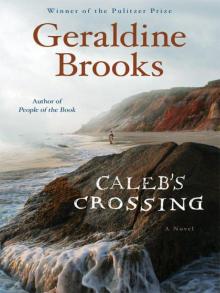 Caleb's Crossing
Caleb's Crossing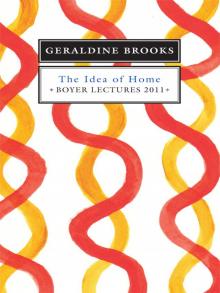 The Idea of Home
The Idea of Home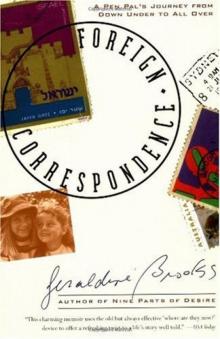 Foreign Correspondence: A Pen Pal's Journey
Foreign Correspondence: A Pen Pal's Journey March
March March: a novel
March: a novel The Best American Short Stories® 2011
The Best American Short Stories® 2011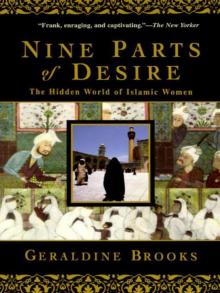 Nine Parts of Desire
Nine Parts of Desire